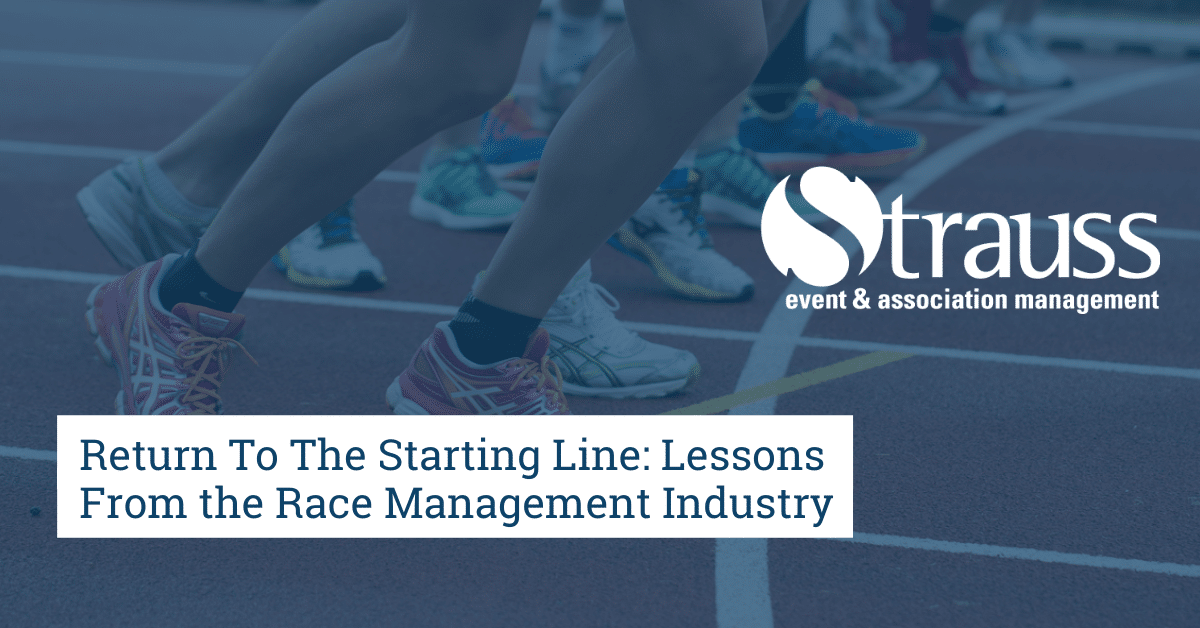The association events sector is experiencing an unprecedented time of flux and uncertainty. One community that is leading the way back into in-person events has been the endurance event management industry: road races, triathlon, Ironman, and marathons. With these events generally all taking place outdoors, restrictions have allowed them to dip back into events much faster than indoor conferences have. Associations have also been leading us toward in-person events again. Currently, we are experiencing highs and lows in the event industry, just like the highs and lows of endurance training. Having worked in the endurance sports industry throughout this time, here are four lessons I learned that will benefit anyone standing at the door of their first in-person event.
Communication is King
There were many times in the past 18 months that Race Directors just didn’t know where things were going and when they might be able to welcome people back to the start line. We learned that people wanted to hear from us consistently, even when we didn’t have useful information to share. For association events, consistently communicate with your members even when you have no updates or new information to give. Give them a heads up that you’re working on a solution or deliberating on how an event will unfold amidst the pandemic.
As you look to invite people back to register for your event, ensure that you are always being transparent. Continue to provide messaging even when things are in flux: people appreciate knowing that they are not forgotten and that you are still working on it. This value will extend as you get closer to your event date. Be clear and provide as much information as is reasonable so that people know what to expect. The more they know in advance, the safer and more comfortable they will feel when they arrive at the registration desk.
Plan For the Worst, Prepare For the Best
This tip isn’t just exclusive to COVID times. However, I have always thought it was particularly applicable coming back from running events to association events. Most large-scale races routinely run “tabletop exercises” in which the full day is visualized from start to finish. This allows for a critical eye on event flow. Catch key sources of concern, giving the team time to discuss how they would respond. Focusing on seeing the event through the attendee’s eyes is an effective way to look for possible hotspots. This allows better preparation, planning updates, and strongly tailored communications pre-event to increase comfort and safety from the moment participants arrive.
Read Hosting Association Events Amidst a Global Pandemic to learn more about adapting to new health and safety standards.
Use Partnerships to Strengthen Events
In the wake of so much uncertainty, Race Directors across Canada met for weekly zoom meetings. They discussed what was happening in their provinces and how they handled adversities. This led to the formation of the Endurance Sports Alliance – a not-for-profit organization that works together to lobby for government support in reopening races safely. It also supports the continuation of health and wellness across Canada. Similarly, Strauss supported discussion groups during the lockdown, keeping everyone updated on event industry news. This is a great lesson for us to carry on as we move back into being together in person. The more we can support each other by connecting and sharing information, the stronger our industry becomes.
Capitalize on Those “Finish Line Feels”
I had the pleasure of working on one of the first large scale road races that took place in Canada. Being able to offer a start line to dedicated athletes who had been away from them for a year and a half was a proud and thrilling experience. On race day, emotions were rampant – there were many tears at both the start and finish. One runner told me that she “finally felt like herself again”. Being together again and being with friends and colleagues from near and far is a big deal.
Your biggest opportunity to make your event special is to bring out the emotional connection people have with coming back to a beloved annual conference, event, or new opportunity to connect. Don’t miss out on that energy by reminding your delegates how grateful you are to have them back and help them embrace the opportunity and the gift of being together again.
Read my colleague’s article for more information on Taking Your Virtual Events from Good to Great

